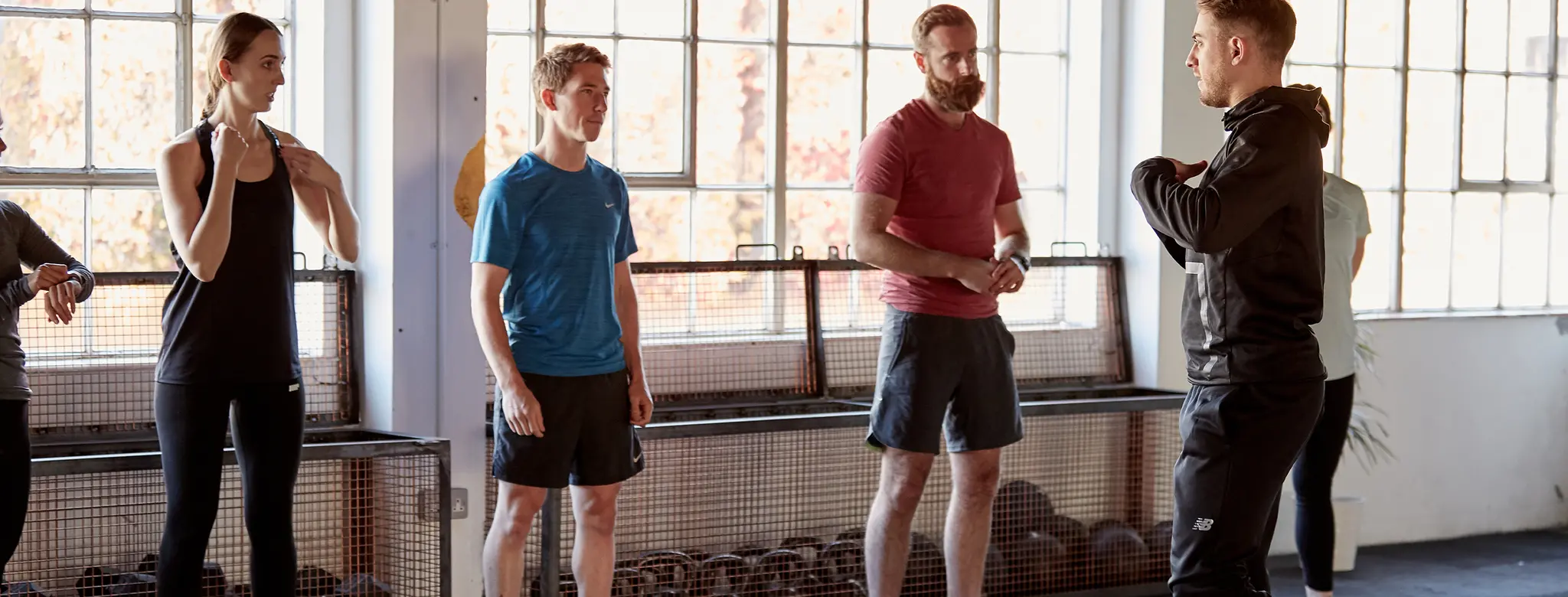Introduction: Setting the Stage for Success
In the realm of health and wellness, exercise and fitness leadership plays a pivotal role in guiding individuals toward their fitness goals and fostering a culture of empowerment and accountability. From certified personal trainers to group fitness instructors, these leaders serve as beacons of knowledge, motivation, and support, helping clients and participants navigate their fitness journeys with confidence and enthusiasm.

The Evolution of Fitness Leadership: A Brief Overview
1. Traditional Approaches
Historically, fitness leadership primarily revolved around one-on-one personal training sessions, where certified professionals would design tailored exercise programs and provide hands-on guidance and instruction to clients. While this approach remains prevalent today, the landscape of fitness leadership has evolved to encompass a broader range of modalities and formats, including group fitness classes, online coaching, and virtual training sessions.
2. Group Dynamics
Group fitness instructors play a critical role in fostering a sense of community and camaraderie among participants, creating a supportive environment where individuals can push their limits and achieve their fitness goals together. Through carefully curated workouts and motivational cues, these leaders inspire and empower participants to challenge themselves and embrace their full potential.
3. Online Platforms
With the advent of technology, exercise and fitness leadership has expanded into the digital realm, with online platforms offering virtual coaching, live-streamed workouts, and interactive challenges. This shift has democratized access to fitness expertise, allowing individuals to engage with certified professionals and fellow enthusiasts from the comfort of their own homes, regardless of geographical location or time constraints.
The Core Principles of Effective Fitness Leadership
1. Education and Expertise
At the heart of fitness leadership lies a commitment to ongoing education and professional development, ensuring that leaders stay abreast of the latest research, trends, and best practices in exercise science and human performance. By cultivating a deep understanding of anatomy, physiology, and biomechanics, fitness leaders can design safe, effective, and evidence-based training programs tailored to the unique needs and goals of their clients and participants.
2. Motivation and Inspiration
Effective fitness leadership transcends the realm of physical exercise, encompassing elements of motivation, inspiration, and behavioral psychology. Whether through uplifting affirmations, goal-setting strategies, or personalized encouragement, fitness leaders empower individuals to overcome obstacles, stay consistent, and unleash their inner strength and resilience.
3. Adaptability and Innovation
In an ever-changing landscape, successful fitness leaders possess a keen sense of adaptability and innovation, constantly evolving their approaches and methodologies to meet the evolving needs and preferences of their clientele. Whether experimenting with new training modalities, integrating cutting-edge technology, or exploring alternative wellness practices, these leaders remain at the forefront of innovation, driving positive change and transformation in the fitness industry.
Navigating Challenges and Overcoming Obstacles
1. Client Adherence
One of the greatest challenges facing fitness leaders is client adherence, as individuals often struggle to maintain consistency and motivation over the long term. To address this challenge, effective leaders employ strategies such as goal setting, progress tracking, and regular check-ins to keep clients accountable and engaged throughout their fitness journey.
2. Injury Prevention
Safety is paramount in the realm of fitness leadership, as improper form, overtraining, and inadequate recovery can increase the risk of injury and undermine progress. By prioritizing proper technique, gradual progression, and recovery strategies, fitness leaders help clients mitigate injury risk and maintain long-term health and vitality.
3. Diversity and Inclusion
In an increasingly diverse and inclusive society, fitness leaders must embrace cultural competence and sensitivity to ensure that their practices and programming resonate with individuals from all backgrounds and identities. By fostering an inclusive environment that celebrates diversity and promotes equity and accessibility, fitness leaders can empower individuals of all ages, abilities, and identities to pursue their fitness goals with confidence and dignity.
The Future of Fitness Leadership: Embracing Innovation and Collaboration
1. Technological Integration
As technology continues to reshape the fitness landscape, the future of fitness leadership lies in harnessing the power of innovation and digital integration to enhance the client experience and expand access to fitness expertise. From wearable devices and virtual reality training platforms to artificial intelligence and personalized coaching algorithms, the possibilities for innovation are endless, offering new opportunities for engagement, empowerment, and transformation.
2. Interdisciplinary Collaboration
In an era of specialization, successful fitness leaders recognize the value of interdisciplinary collaboration, partnering with healthcare professionals, nutrition experts, and mental health practitioners to deliver holistic, integrated wellness solutions. By leveraging the collective expertise of diverse professionals, fitness leaders can address the multifaceted needs of their clients and foster comprehensive health and well-being.
3. Global Connectivity
In an increasingly interconnected world, fitness leadership transcends geographical boundaries, offering opportunities for global connectivity and collaboration. Through virtual coaching, online communities, and cross-cultural exchanges, fitness leaders can reach individuals around the globe, sharing knowledge, inspiration, and support to foster a worldwide culture of health, vitality, and empowerment.
Conclusion: Empowering Individuals, Transforming Lives
As exercise and fitness leadership continues to evolve and innovate, its impact extends far beyond the realm of physical activity, empowering individuals to unlock their full potential and transform their lives for the better. By embodying the core principles of education, motivation, and adaptability, fitness leaders serve as catalysts for change, guiding clients and participants on a journey of self-discovery, growth, and fulfillment. So, whether you’re embarking on your own fitness journey or aspiring to lead others toward their goals, remember that the power to inspire, motivate, and transform resides within you.